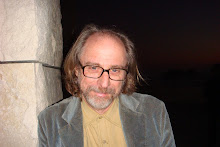In younger days, whenever a group of pretentious young adults got together for a gathering, it wasn’t long before someone brought up the question: “What is art?” The idea was to try to say something intelligent without sounding too silly, nearly always an impossible task. Eventually someone would say something about art similar to what Supreme Court Justice Potter Stewart said about pornography: that he couldn’t quite explain it, but “I know it when I see it.”
I have taught now for several years at UCLA School of Medicine. Initially the course I tutored was in the first year of medical school, and occasionally I would ask the students whether they thought medicine was a science or an art. Typically in the first year nearly all the students said it was a science. In the second year, however, the students were split more evenly down the middle. I have often wondered where the numbers would be by the fourth year. Real life, I suppose, can transform that which appears at first to follow the linear rules of scientific inquiry into the more mystical realm of art.
It has been said that good art awakens something in us, and becomes the abode of that which we might call “spirit.” Defining “spirit” of course is another party topic, one more likely to be heard these days than the question of defining art. For the moment, let us agree that spirit refers to some sort of essential life-force. It is that force that animates us, drives us to feel alive.
Behavior analysts are trained to believe that a defining characteristic of their profession is that it is a science. It follows logical rules, and decisions are based on data, not intuition or guesswork. The former of course are the domain of science, where the latter tends to reside in the realm of spirit. But I would suggest the opposite: watch a behaviorist at work. The truly good ones are artists. Their work awakens something inside of us, makes us feel alive. Their interactions are like impromptu dances, reacting gracefully and seamlessly to the client’s behavior. The behavior analyst as artist spontaneously creates something beyond the logic of science as she taps into her repertoire and responds with a deep awareness of the child’s needs, wishes, intentions and the environment within which the child interacts. As it is with most art, these results take years of study, years of “science”, years of clumsy, “bad art” to build on.
As the whole is always more than the sum of its parts, the behavior analyst creates something beyond the mere piecing together of the data. She uses those tools as a painter might learn how to mix colors, or which paints or brushes creates a desired effect. But the end result is the creation of something larger than the technical methods could do on their own. A child’s spontaneous smile, a laugh at just the right moment, the uttering of the first meaningful words, the twinkling in a child’s eyes as he discovers something new is an awakening of the child’s spirit. It is an awakening that comes often as the partial result of the creative efforts of the behavior analyst, the artistry and dedication, the creative and yes, even intuitive, dance between the spirit of the behavior analyst and the spirit of the client.
Saturday, March 13, 2010
Subscribe to:
Posts (Atom)
